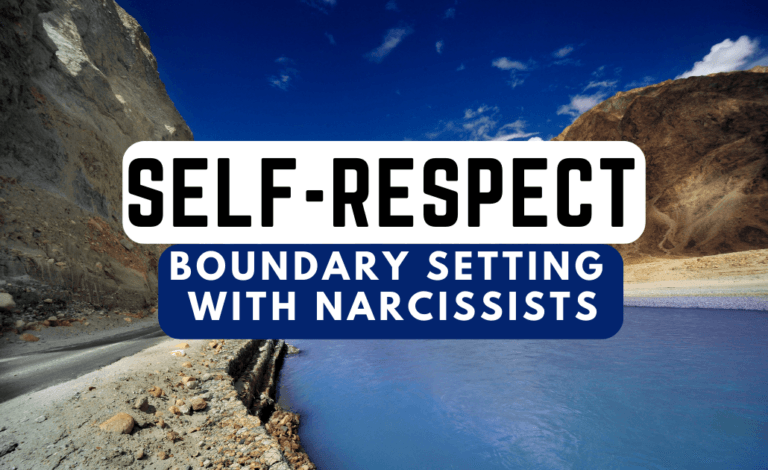Trauma Responses in the Context of Narcissistic Abuse: Understanding the Impact on Victims-5 Encouraging Words
Context of Narcissistic Abuse
Narcissistic abuse can leave deep psychological scars, often leading victims to adopt trauma responses that were initially protective but may later become detrimental to their well-being. When subjected to manipulation, gaslighting, and emotional cruelty, victims of narcissistic abuse often engage in the four classic trauma responses: fight, flight, freeze, and fawn. Each of these responses can manifest differently due to the unique dynamics of narcissistic relationships. This article will explore how each trauma response plays out in the context of narcissistic abuse, helping readers better understand their own reactions and take steps toward healing.
1. Fight Response: The Battle for Control
In the context of narcissistic abuse, the fight response doesn’t necessarily mean physical aggression. Instead, it often surfaces as a persistent struggle for control, both over the narcissist and one’s own sense of autonomy.
Manifestations in Narcissistic Abuse:
- Arguing or Defending: Victims might find themselves constantly defending their actions or character against the narcissist’s attacks. They may engage in verbal battles, trying to prove their worth or expose the narcissist’s manipulation.
- Standing Up to Gaslighting: Victims may try to challenge the narcissist’s distorted reality, fighting to keep their own sense of truth and sanity intact. This can lead to exhaustion as the narcissist consistently deflects or denies their behavior.
Long-Term Impact:
Over time, this fight response can lead to chronic stress, anxiety, and frustration. Victims often feel trapped in a never-ending battle, unable to break free from the toxic cycle of conflict. While initially protective, the fight response can exhaust the victim, leaving them feeling powerless.
2. Flight Response: Escaping the Pain
The flight response in narcissistic abuse typically manifests as an overwhelming desire to escape the situation or the abuser. However, fleeing a narcissistic relationship is often complicated by emotional and psychological manipulation, which makes leaving difficult.
Manifestations in Narcissistic Abuse:
- Physical Withdrawal: Victims might avoid spending time with the narcissist, distancing themselves emotionally or physically. They may retreat to another room, take long breaks away from home, or immerse themselves in work or hobbies to escape.
- Ending the Relationship: In some cases, victims may attempt to end the relationship, only to be drawn back in by the narcissist’s manipulation (also known as “hoovering”). The push-pull dynamic creates a cycle of leaving and returning, keeping the victim caught in the abuse.
Long-Term Impact:
The flight response can create feelings of isolation, loneliness, and guilt, especially when victims are repeatedly drawn back into the relationship. The victim may struggle with feelings of inadequacy for not being able to “just leave” and may fear retaliation or further manipulation if they try to escape.
3. Freeze Response: Feeling Stuck in Narcissistic Abuse
The freeze response is common in victims of narcissistic abuse, particularly when they feel emotionally overwhelmed or powerless to change their situation. Narcissists often create an environment of constant confusion and instability, leaving their victims feeling immobilized.
Manifestations in Narcissistic Abuse:
- Emotional Numbness: Victims might feel emotionally detached or numb as a way of coping with the constant manipulation and verbal abuse. This response helps them survive in the short term but may prevent them from taking action to improve their situation.
- Inability to Make Decisions: Due to the narcissist’s manipulation, victims may struggle with indecision and self-doubt. The narcissist’s gaslighting tactics make victims question their judgment, leading them to freeze and avoid making important decisions about the relationship.
Long-Term Impact:
Over time, the freeze response can leave victims feeling paralyzed in their own lives. They may remain stuck in the abusive relationship, unable to make decisions or take steps toward healing. Emotional numbness can also lead to depression and a sense of hopelessness.
4. Fawn Response: People-Pleasing and Narcissistic Abuse
The fawn response is particularly prevalent in narcissistic abuse, as victims often adopt people-pleasing behaviors to avoid conflict and further abuse. Narcissists thrive on control and manipulation, and victims who engage in fawning inadvertently reinforce the narcissist’s behavior by constantly appeasing them.
Manifestations in Narcissistic Abuse:
- Constantly Apologizing: Victims may apologize for things that aren’t their fault in order to avoid the narcissist’s wrath. They take on the blame for conflicts, believing that keeping the peace is their responsibility.
- Suppressing Personal Needs: Victims may prioritize the narcissist’s needs and emotions over their own, neglecting their own well-being in the process. They may walk on eggshells, trying to anticipate and meet the narcissist’s demands to avoid criticism or punishment.
- Seeking Approval: Narcissists often condition their victims to seek their approval, leading the victim to change their behavior, personality, or appearance to please the abuser.
Long-Term Impact:
The fawn response can deeply erode a victim’s sense of self. Over time, they may lose touch with their own identity and needs, becoming entirely focused on the narcissist’s approval. This response can lead to low self-esteem, anxiety, and depression, as the victim becomes increasingly dependent on the abuser for validation.
The Cycle of Trauma and Narcissistic Abuse
Victims of narcissistic abuse often cycle through all four trauma responses, depending on the situation and the narcissist’s behavior. One day they may fight back, trying to regain control; the next, they might flee emotionally or physically to avoid further abuse. At times, they may feel frozen and unable to take action, and at other moments, they may fawn and people-please in a desperate attempt to avoid conflict.
This cycling of trauma responses keeps victims trapped in the abusive relationship, as the narcissist continually manipulates and controls them. Understanding these trauma responses can help victims recognize their own behaviors and patterns, empowering them to seek help and begin healing.
Healing from Narcissistic Abuse: Reclaiming Your Power
Recovering from narcissistic abuse requires breaking free from these trauma responses and rebuilding a sense of self. Here are some key steps to start the healing process:
- Acknowledge the Abuse: The first step to healing is recognizing that you’ve been subjected to narcissistic abuse and understanding how it has affected you. This awareness can help you break free from the toxic dynamics of the relationship.
- Seek Professional Help: Therapy, particularly trauma-informed therapy such as Cognitive Behavioral Therapy (CBT) or Eye Movement Desensitization and Reprocessing (EMDR), can help victims process their trauma and develop healthier coping mechanisms.
- Establish Boundaries: One of the most important aspects of healing is learning to set and maintain boundaries. This may involve limiting contact with the narcissist or going no-contact if possible.
- Reconnect with Yourself: Victims of narcissistic abuse often lose touch with their own needs, desires, and identity. Taking time to reconnect with yourself, engage in self-care, and rebuild your self-esteem is crucial for recovery.
- Surround Yourself with Support: Having a strong support system of friends, family, or support groups can provide emotional support and validation as you navigate the healing process.
Conclusion: Understanding Trauma Responses as a Path to Healing
Narcissistic abuse leaves deep psychological wounds, but understanding the trauma responses of fight, flight, freeze, and fawn can be a powerful tool for healing. By recognizing these patterns and understanding how they manifest in your life, you can begin to break free from the cycle of abuse, reclaim your identity, and rebuild your life on your terms.
context of narcissistic abuse context of narcissistic abuse context of narcissistic abuse context of narcissistic abuse context of narcissistic abuse context of narcissistic abuse context of narcissistic abuse context of narcissistic abuse







